Crown And Bridges
What are Dental Crowns?
A dental crown or dental cap is a custom made restoration that covers a tooth with sustained significant loss of structure. They are analogical to being a thimble capped over your finger. Dental crowns are used to restore teeth to a certain shape and size. They provide strength and improves the appearance of the tooth.
Dental crowns are tooth-shaped caps designed to restore the shape, size, and appearance of a damaged tooth while also strengthening it. When a significant portion of the tooth is missing, a crown is often the best solution to restore normal function.
A dental crown provides your tooth with added strength, proper shape, and improved appearance. If your dentist has recommended a crown, delaying the procedure can lead to further damage, potentially making tooth extraction necessary. Additionally, neglecting to get a crown can cause wear and damage to surrounding teeth.



Enhanced confidence

Excellent Dental Care
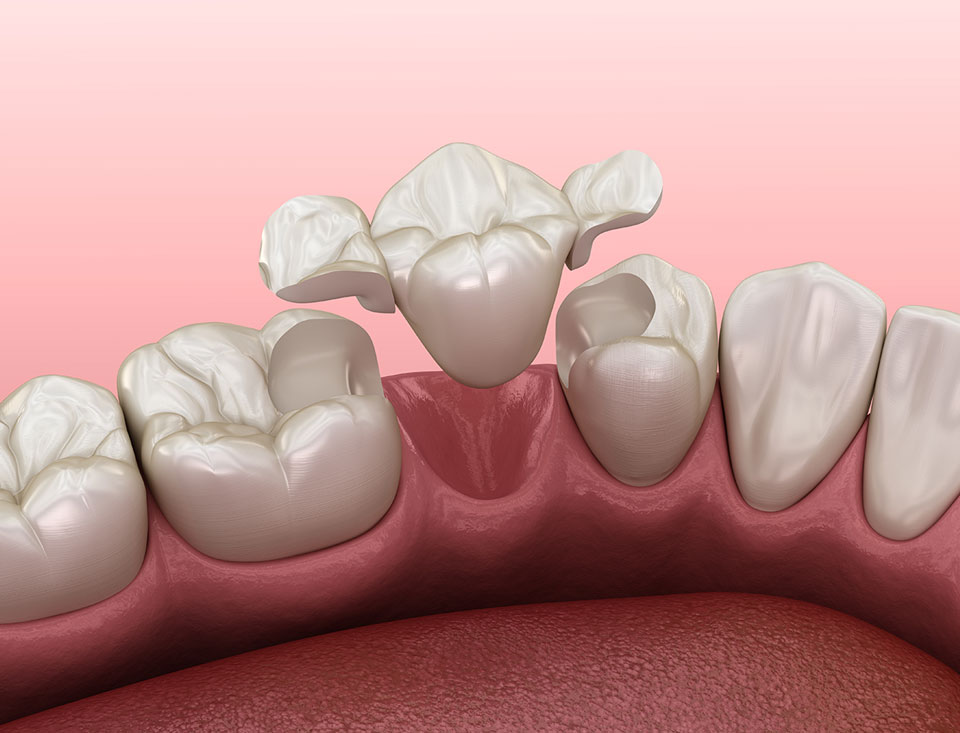
Benefits of Dental Crowns
- Holds together cracked or weaken teeth and seal the tooth from decay
- Covers discolored and irregularities in teeth in improving cosmetic appearance
- Helps preserve the natural function and position of the teeth
- Restores tooth with large decay, cavities or filings
- Supports the replacement teeth in a bridge
- Restores and maintains natural bite
- Covers a dental implant
Types of Dental Crowns
There are three basic types of materials for dental crowns:
- Porcelain fused to metal (PFM) dental crowns
- All porcelain dental crowns
- All metal dental crowns (Gold)
Porcelain fused to metal (PFM) dental crowns and all porcelain crowns are tooth colored crowns. PFM dental crowns offer the best combination of aesthetics and durability. PFM dental crowns are usually used to restore back teeth where the forces of chewing and grinding are strongest. All porcelain crowns are the most aesthetic and are used primarily used for front teeth where the need for strength is not as critical. Gold dental crowns are the most durable and offer the most precise fit. Gold dental crowns does not chip.
Procedure for Dental Crowns Treatment
course of treatment described here is one of several options available at our dental clinic. Consult your dentist to find out what the best solution is for you, given your specific condition.
First evaluation and crowns tooth preparation
- Local anesthesia is first administered at the region for crown tooth preparation
- The natural tooth is reshaped to receive the new dental crown
- Records are taken and approved with the patient to determine the color, bite, length and shape of the crown
- An impression is taken for a replica model of the teeth
- This model is sent to a lab where the individual personal crown is fabricated
- A temporary crown is placed on whilst the permanent crown is made
- Fitting of crowns on delivery
- The temporary crown is removed
- The permanent crown is fitted and cemented into place on the teeth
- A quality assurance check is done for any re-adjustments or re-works of the dental crowns Care of crowns
- Brush and floss the crowns as recommended by your dentist or dental hygienist.
Recovery Expectations
Both the preparation and placement of the temporary bridge as well as the bonding of the permanent bridge may cause some minor tenderness in the area. Some individuals may experience sensitivity in teeth. This sensitivity will disappear gradually over a few days to weeks.
Postcare Instructions for Dental Crowns
Avoid chewing on or eating hard foods on the restorations for 24 hours from the time they were cemented
- To help with discomfort or swelling rinse your mouth with warm salt water. (1tsp. of salt in 8oz of water)
- Keep crown area clean to maintain tissue compatibility (the contour of the prosthesis must allow the surrounding tissue to conform to a natural, healthy position)
- Some sensitivity in teeth may be experienced by certain patients. This sensitivity will disappear gradually over a few days to weeks. If teeth are sensitive
- Avoid hot, cold or acidic food and beverages
- Pain medication be taken as directed as long as there is no medical contradiction based upon your medical history
- Use flouride rinse and toothpaste for sensitive teeth
- Clean teeth properly
Care for Dental Crowns
Dental crowns require the same regular and consistent home and professional dental care, as your natural teeth to prevent decay at the tooth-dental crown junction. To provide optimum longevity for your restorations, please follow the home care tips below:
Brush after eating and before bedtime around the crown with a soft toothbrush, especially where the crown meets the gum line. At the gum line harmful bacteria can be harbored to cause decay and gum disease.
- Floss at least once to twice a day. Use the proxy brush or floss threader to remove plaque under and around these areas to maintain good oral hygiene. Buildup of food debris and plaque on your teeth and gums can become infected.
- Rinse with fluoride rinse before bed. Swish the fluoride rinse vigorously in your mouth for at least one minute. Do not swallow any of the rinse and do not eat or drink anything for 30 minutes
- Be careful about chewing toffees, gum, grainy rolls and tough food in this area
- See your dentist for regular professional check-ups and cleanings
A dental bridge is one method to fill a gap created by a missing tooth (or teeth). Dental bridge or pontic is a custom-made false tooth or teeth, that is permanently placed between two healthy teeth, filling in the area left by a missing tooth or teeth. The bridge is held in place by crowns placed on the healthy teeth on each side of space to be filled.


Brighten Your Smile with Pola Tooth Whitening
Your smile deserves exceptional attention. Choose our advanced Pola Tooth Whitening system to achieve a brighter appearance quickly.
Benefits of Dental Bridges
- Restores your smile
- Restores your ability to properly chew and speak
- Maintains the shape of your face
- Distributes the forces in your bite properly by replacing missing teeth
- Prevents remaining teeth from drifting out of position
- Helps preserve the natural function and position of the teeth
- Restores and maintains natural bite

Types of Dental Bridges
Traditional bridges
Traditional bridges involve creating a crown for the tooth or implant on either side of the missing tooth, with a pontic in between. Traditional bridges are the most common type of bridge.
Cantilever bridges
Cantilever bridges are usually used when there are adjacent teeth on only one side of the missing tooth or teeth.
Maryland bridges
Marlyland bridges also called a resin-bonded bridges or a Maryland bonded bridges. Maryland bridges are supported by a metal framework. Metal wings on each side of the bridge are bonded to the back of existing teeth.
Types of Dental Bridge Materials
There are three basic types of materials for dental bridges:
- Porcelain fused to metal dental bridges
- All porcelain dental bridges
- All metal dental bridges (Gold)
Get Started Today!
Unlock the benefits of expert dental care today.
LavaT Crowns and Bridges
LavaT Crowns and Bridges from 3M ESPE utilize an innovative CAD/CAM technology for producing all-ceramic crowns and bridges on a zirconium-oxide glass-free polycrystalline base, resulting in high-strength, reliable restorations with excellent esthetics and outstanding marginal fit. Preparations require minimal removal of tooth structure, and cementation can be accomplished using proven, conventional techniques.
Lava is much more than zirconia! It is a "Digital Platform"
Other facilities set out for our patients convenience and treatment includes:
- Digital Impression
- Digital Scan
- Digital Design
- CADCAM mill
- Digital sintering
- Dedicated reception to receive patient on each level.
- Patient lobby
- Dedicated consultation room on each level
- Panoramic X- Ray room along with X-Ray processing room
- Office and conference room.
Clinical Studies results:
- Zero fracture of the zirconia coping and no debonding of the porcelain to the zirconia.
- No fracture of the framework ==> 100% survival rate
- No allergic reaction or negative influence
- No secondary caries
- No changes in fit
- Slight chippings in single cases still in situ (no need for re-treatment)
- No marginal discoloration
- No post-op sensitivity
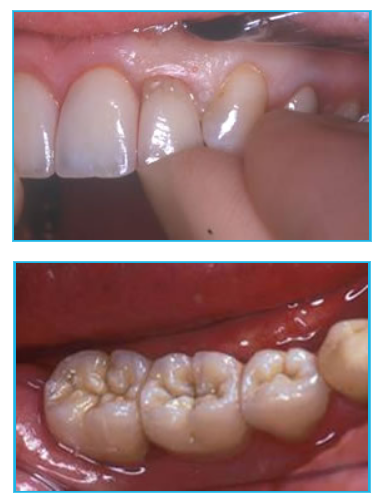
Why zirconia?
Zirconia strengths are comparable to metal.Zirconia is crack resistant, and undergoes a phenomenon called "transformation toughening". Zirconia's strength allows traditional PFM preparation design.
Lava's higher strength allows traditional cementation, as well as bonding Coping thicknesses can be as little as 3/10ths in the anterior resulting in:
- A need for less tooth reduction, or
- Increased room for esthetic porcelain
Lava's Zirconia translucency is similar to natural dentin.
Zirconia is insoluble, which is important in regards to long-term strength.
Due to the strength of Zirconia', Lava's bridge connector sizes are esthetic and are comparable to the size of metal connectors Fits are similar or better than metal Being metal free, esthetics are naturally much better than PFM's
Processing Scheme
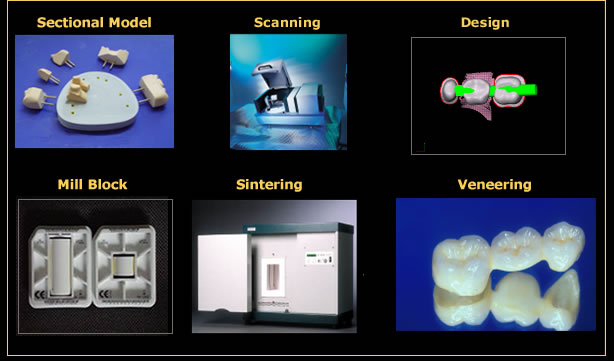
Previous All-Ceramic Crowns Disadvantages:
- Mechanical strength
- Shorter term survivability
- Required more tooth reduction
- Required more chair-time (i.e. bonding)
- Didn't fit well
- Cost
- Brittle, cannot be reduced without chipping
- No room for porcelain. White copings result in cervical color washout.
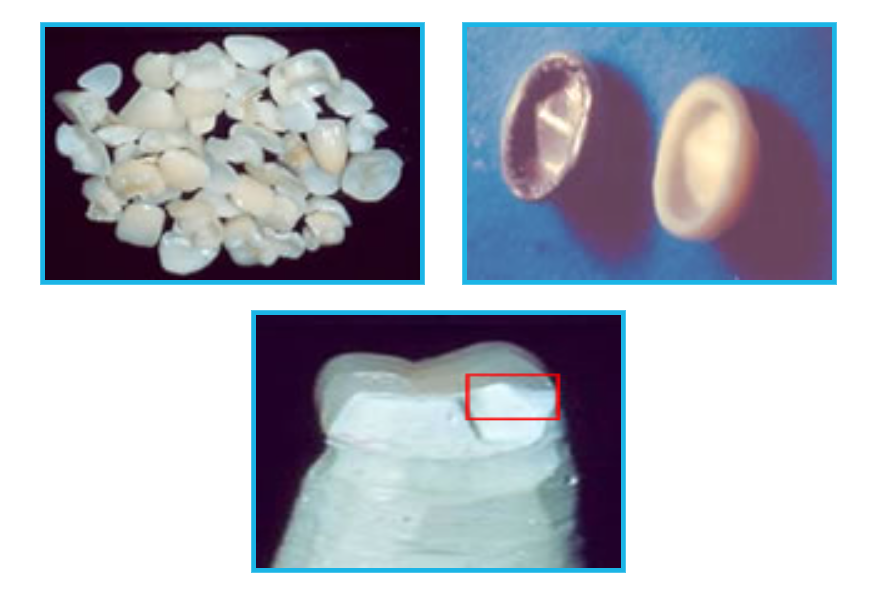
traditional problem with ceramics: Crack Propagation
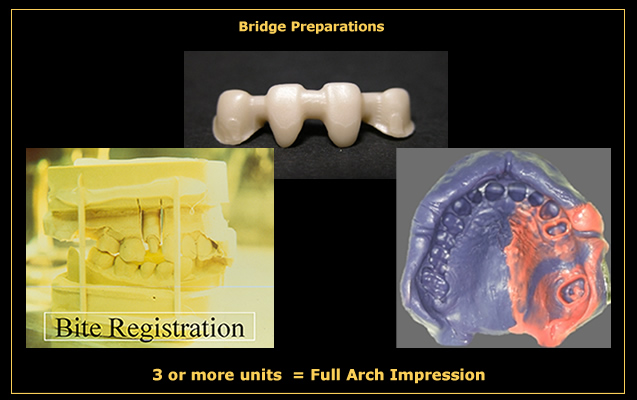
Get Started Today!
Unlock the benefits of expert dental care today.
Get in Touch with Us
Your Trusted Partner in Dental Care
Ready to take the next step toward a healthier smile? Contact us now to schedule your appointment.


